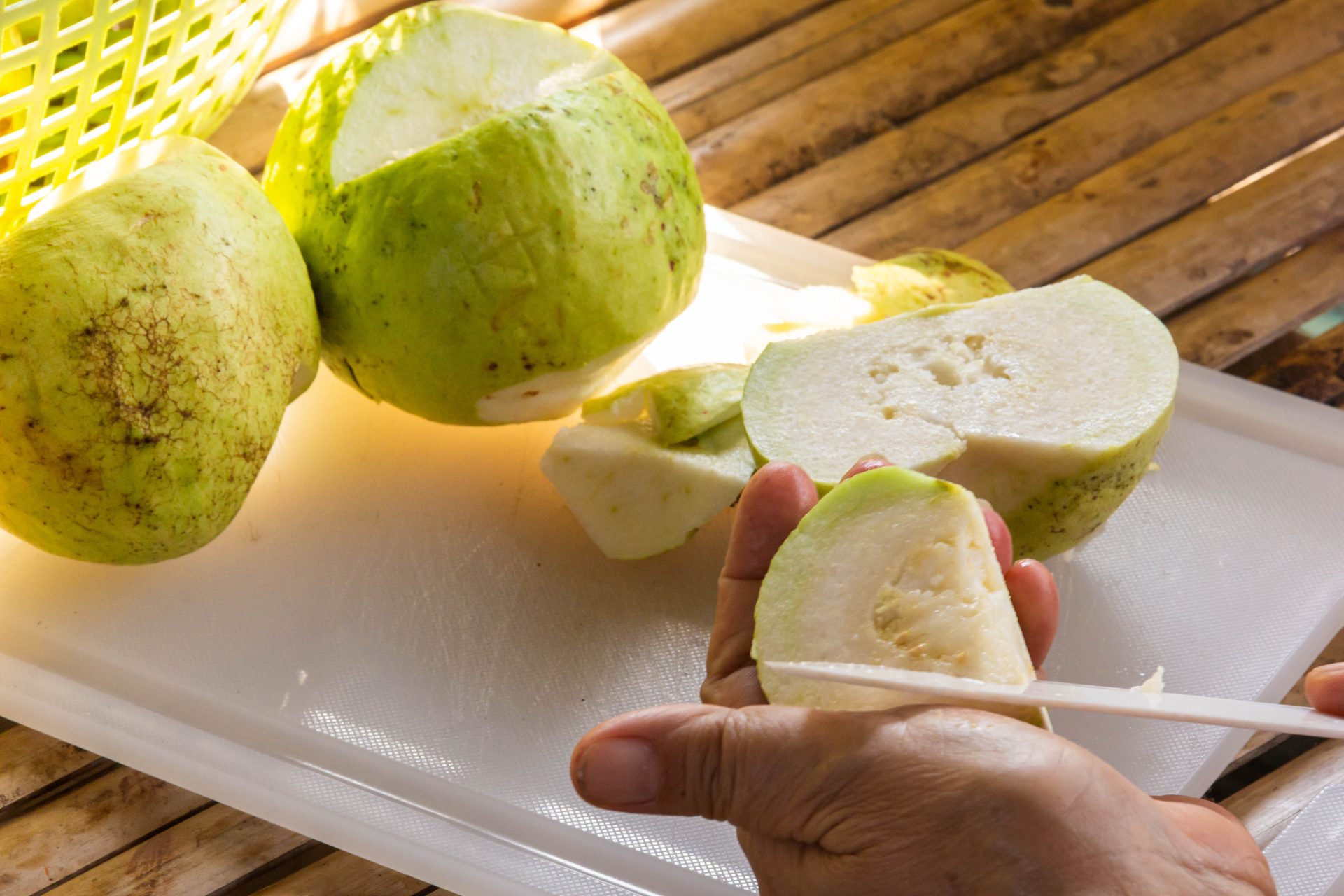

Articles
How To Store Pepperoni
Modified: February 20, 2024
Discover the best way to store pepperoni with our informative articles. Keep your favorite snack fresh and flavorful for longer periods.
(Many of the links in this article redirect to a specific reviewed product. Your purchase of these products through affiliate links helps to generate commission for Storables.com, at no extra cost. Learn more)
Introduction
Welcome to this informative guide on how to store pepperoni. Whether you’re a fan of pizza, sandwiches, or Italian-inspired dishes, pepperoni is a versatile and delicious ingredient that adds a burst of flavor to any meal. However, if you find yourself with leftover pepperoni or want to stock up on this savory meat for future use, it’s important to know how to store it properly to maintain its taste and quality.
Pepperoni, a type of cured sausage made from pork, beef, or a combination of both, is typically seasoned with spices like paprika, garlic, and pepper. Its distinct smoky and spicy flavor profile is what makes it a popular choice for various dishes.
When it comes to storing pepperoni, there are a few factors to consider, such as whether to refrigerate or freeze it, and how long it can be stored for. By understanding these factors, you can ensure that your pepperoni stays fresh and can be enjoyed for an extended period of time.
So, let’s dive into the nitty-gritty details of storing pepperoni and explore the best methods to keep it fresh and flavorful!
Key Takeaways:
- Properly storing pepperoni is crucial for maintaining its flavor and quality. Refrigerate for short-term use and freeze for long-term storage to enjoy the delicious taste in various dishes.
- Thaw frozen pepperoni in the refrigerator or using the cold water method for immediate use. Utilize it in creative recipes and ensure to use thawed portions within a few days for the best results.
Read more: How To Store Store-Bought Bread
Understanding Pepperoni
Before we delve into the techniques of storing pepperoni, let’s take a moment to understand this delectable meat product. Pepperoni is typically made from a mixture of ground pork, beef, or a combination of both. The meat is seasoned with various spices, including paprika, garlic powder, crushed red pepper, and black pepper, which gives it its distinctive flavor and red color.
Traditionally, pepperoni is cured and fermented, allowing the flavors to develop over time. This curing process also helps extend the shelf life of the meat. It is important to note that pepperoni is a cured meat product, which means it is already preserved and can be stored for a reasonable amount of time.
Pepperoni comes in various forms, including sliced, sticks, and even pre-cooked. While the most commonly used form is sliced pepperoni, the storage techniques discussed in this guide can be applied to any type of pepperoni.
With its rich and robust flavor, pepperoni is a staple ingredient in many popular dishes. From classic pepperoni pizza to hearty pasta dishes, sandwiches, and even appetizers, the possibilities for incorporating pepperoni into your culinary creations are endless.
Now that we have a better understanding of what pepperoni is, let’s move on to the important factors to consider when it comes to storing it properly.
Factors to Consider
When it comes to storing pepperoni, there are several factors to consider to ensure that it stays fresh and maintains its flavor. These factors include temperature, packaging, and the duration of storage. Let’s take a closer look at each of these considerations:
Temperature: Pepperoni should be stored in a cool and dry place to prevent spoilage. The ideal temperature for storing pepperoni is between 32°F (0°C) and 40°F (4°C). It’s important to keep it away from heat sources, such as direct sunlight or near the stove, as the heat can cause the fat in the pepperoni to melt and affect its texture and flavor.
Packaging: Proper packaging is crucial for maintaining the quality of pepperoni. When purchasing pepperoni, it usually comes in a vacuum-sealed package or tightly sealed plastic wrap. If you open the package and have leftovers, it’s important to reseal it tightly to prevent air from entering and causing freezer burn or spoiling the meat. Alternatively, you can transfer the pepperoni to an airtight container, ensuring that it is protected from moisture and odors.
Duration of Storage: While pepperoni can stay good for several weeks or even months, it’s important to keep track of its shelf life. Always check the expiration date on the package and follow any instructions provided by the manufacturer. If the pepperoni has passed its expiration date or shows signs of spoilage, such as a foul smell or discoloration, it’s best to discard it.
By considering these factors and following the proper storage techniques, you can ensure that your pepperoni stays fresh and flavorful for as long as possible. In the next sections, we will explore the specific storage methods for both refrigeration and freezing.
Refrigerator Storage
If you plan to use your pepperoni within a relatively short period of time, refrigeration is the way to go. Here’s how to properly store pepperoni in the refrigerator:
- Check the packaging: Before storing the pepperoni, inspect the packaging for any signs of damage or leaks. If the packaging is compromised, transfer the pepperoni to an airtight container or wrap it tightly in plastic wrap to maintain its freshness.
- Store in the refrigerator: Place the pepperoni in the refrigerator’s meat or deli compartment. If there isn’t a specific compartment for meats, store it in the coldest part of the fridge to ensure a longer shelf life.
- Proper wrapping: If you have opened the original packaging, make sure to tightly reseal it or transfer the pepperoni to an airtight container. This will prevent air exposure and maintain the quality of the meat.
- Organize and separate: Keep the pepperoni away from other strongly flavored foods, as it can absorb their odors. If possible, store it in a separate area or use a designated container for pepperoni.
- Temperature control: Ensure that your refrigerator is set to a temperature between 32°F (0°C) and 40°F (4°C) to maintain an optimal environment for pepperoni storage.
When stored correctly in the refrigerator, pepperoni can typically last for about 1-2 weeks. However, it’s always a good idea to check the expiration date on the packaging and use your senses to determine if the pepperoni is still fresh. If you notice any signs of spoilage, such as a slimy texture or an off-putting smell, it’s best to discard it.
Refrigerator storage is ideal for shorter durations and allows for easy access to the pepperoni for immediate use in various recipes. However, if you don’t plan to use the pepperoni within a week or two, freezing it is a better option to extend its shelf life. Let’s explore how to properly freeze pepperoni in the next section.
Store pepperoni in the refrigerator in an airtight container or resealable bag to keep it fresh. It can also be frozen for longer storage, just make sure to wrap it tightly to prevent freezer burn.
Freezer Storage
If you have a larger quantity of pepperoni or want to store it for an extended period of time, freezing is the best method. Freezing pepperoni is a simple process that helps maintain its quality and flavor. Here’s how to properly store pepperoni in the freezer:
- Check the packaging: Inspect the original packaging for any damage or leaks. If necessary, transfer the pepperoni to an airtight container or wrap it tightly in plastic wrap to prevent freezer burn.
- Divide into portions: If you have a large piece of pepperoni or a whole stick, consider dividing it into smaller portions. This allows for easier thawing and prevents unnecessary thawing and refreezing of the entire batch.
- Wrap properly: The key to freezing pepperoni successfully is to eliminate as much air as possible. Wrap each portion of pepperoni tightly in plastic wrap, ensuring there are no gaps or exposed areas.
- Label and date: Before placing the wrapped pepperoni in the freezer, label each package with the date of freezing. This will help you keep track of its freshness and rotation.
- Store in the freezer: Place the wrapped and labeled pepperoni in the freezer, making sure to stack them in an organized manner to maximize space.
When stored properly, frozen pepperoni can maintain its quality for up to 6 months. However, for the best flavor and texture, it’s recommended to use it within 3-4 months of freezing. Beyond that time frame, the pepperoni may begin to develop a freezer burn taste or lose its original flavor.
To thaw frozen pepperoni, simply remove the desired portion from the freezer and place it in the refrigerator overnight. The gradual thawing in the refrigerator helps maintain the meat’s texture and taste. Avoid thawing at room temperature, as this can lead to the growth of harmful bacteria.
Now that you know how to properly store both refrigerated and frozen pepperoni, let’s dive into some additional tips to ensure the longevity and quality of your stored pepperoni.
Read more: How To Store Basil From Grocery Store
Tips for Long-term Storage
To maximize the shelf life and quality of your stored pepperoni, here are some valuable tips:
- Proper packaging: For long-term storage, consider vacuum sealing your pepperoni. Vacuum-sealed packages remove all the air, preventing freezer burn and preserving the flavor and texture of the meat.
- Use freezer-safe containers: If you prefer to use containers instead of plastic wrap, make sure they are specifically designed for freezer storage. These containers are typically labeled as “freezer-safe” and are made from materials that prevent freezer burn.
- Avoid fluctuations in temperature: To maintain the quality of your frozen pepperoni, it’s important to keep the freezer temperature consistent. Avoid frequently opening the freezer door, as this can lead to temperature fluctuations that can affect the texture and taste of the meat.
- Rotate your stock: When you have multiple packages of pepperoni in the freezer, it’s a good idea to practice the “first in, first out” rule. This means using the older packages before the newer ones to ensure that you’re always consuming the oldest pepperoni first.
- Label and date your packages: Always label your packages with the date of freezing to keep track of their shelf life. Additionally, consider labeling the portion size or any other relevant information to make it easier when you need to grab a specific amount.
- Avoid thawing and refreezing: When you thaw frozen pepperoni, try to use the entire portion to prevent unnecessary thawing and refreezing. Thawed pepperoni can be refrigerated and used within a few days, but it’s best to avoid refreezing it to maintain its quality.
By following these tips, you can ensure that your stored pepperoni stays fresh, flavorful, and safe to consume for an extended period of time. Whether you’re stocking up on pepperoni during a sale or have leftover slices from a previous meal, these storage techniques will help you make the most of your pepperoni and reduce food waste.
Now that you know how to store pepperoni for both short and long-term periods, let’s explore the process of thawing and using frozen pepperoni.
Thawing and Using Frozen Pepperoni
When it comes to using frozen pepperoni, proper thawing is essential to preserve its quality and flavor. Here are the steps to thaw and use frozen pepperoni:
- Refrigerator thawing: The best method to thaw frozen pepperoni is to transfer it from the freezer to the refrigerator. Place the desired portion of frozen pepperoni in a bowl or on a plate and let it thaw slowly in the refrigerator overnight. This gradual thawing process helps maintain the texture and taste of the meat.
- Immediate usage: If you need to use the frozen pepperoni right away, you can opt for a quick-thawing method. Place the frozen pepperoni in a sealed plastic bag and submerge it in cold water. Change the water every 30 minutes to ensure that it stays cold. This method should thaw the pepperoni within a couple of hours.
- Refrigerated storage: Once the pepperoni is thawed, you have a couple of options. If you plan to use it within a few days, you can store it in the refrigerator. Place the thawed pepperoni in an airtight container or resealable bag and keep it refrigerated until ready to use.
- Cooking with thawed pepperoni: Thawed pepperoni is a versatile ingredient that can be used in a variety of dishes. It can be added to pizzas, pasta sauces, sandwiches, omelettes, and more. The unique smoky and spicy flavor of pepperoni can elevate the taste of any dish.
Remember, once you have thawed pepperoni, it’s important to use it within a few days to ensure its freshness. If you have extra thawed pepperoni that you won’t be using immediately, you can separate it into smaller portions and freeze them individually for future use.
By following these simple thawing methods and utilizing your thawed pepperoni in creative recipes, you can make the most of your frozen stash and enjoy the unmistakable taste of pepperoni even after it has been frozen.
Now that you’re equipped with the knowledge of storing, thawing, and using pepperoni, you can confidently stock up on this delicious ingredient and savor its flavor whenever your recipes call for it.
Conclusion
Properly storing pepperoni is essential to maintain its flavor, quality, and longevity. By considering factors such as temperature, packaging, and duration of storage, you can ensure that your pepperoni stays fresh and delicious for as long as possible.
Refrigerator storage is ideal for shorter durations, typically lasting up to 1-2 weeks. Ensure you tightly reseal the original packaging or transfer the pepperoni to an airtight container to prevent air exposure and maintain freshness. Keep it in the coldest part of the refrigerator, away from strongly scented foods.
If you have a larger quantity or want to store pepperoni for an extended period, freezing is the best option. Properly wrap and label each portion before placing it in the freezer. Frozen pepperoni can maintain its quality for up to 6 months, but it’s recommended to use it within 3-4 months for the best taste and texture.
Remember to practice proper thawing techniques by thawing pepperoni in the refrigerator overnight or using the cold water method if immediate use is needed. Once thawed, store it in the refrigerator and use it within a few days for the best results.
Incorporating pepperoni into various dishes, such as pizzas, pastas, sandwiches, and more, can add a burst of flavor to your meals. With careful storage and thawing, you can enjoy the delightful taste of pepperoni long after it has been purchased or cooked.
By following these guidelines, utilizing proper packaging, and implementing smart storage practices, you can ensure that your pepperoni remains fresh, flavorful, and safe to consume. So go ahead, stock up on this versatile ingredient, and savor its deliciousness in your favorite recipes!
Frequently Asked Questions about How To Store Pepperoni
Was this page helpful?
At Storables.com, we guarantee accurate and reliable information. Our content, validated by Expert Board Contributors, is crafted following stringent Editorial Policies. We're committed to providing you with well-researched, expert-backed insights for all your informational needs.















0 thoughts on “How To Store Pepperoni”